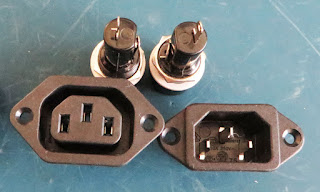Summary
This short blog lists a handful of drawings for lids/plates of instrument cases that were replaced with circuit boards.
 |
Example Project using 3D Printed PCB Panel (Multicomp MC002212)
|
Front Plates as Circuit Boards
The lid or plate on an instrument case is commonly manufactured as a plastic such as ABS, diecast aluminium or steel. These can be readily be replaced with a circuit board. Some of the benefits and drawbacks of using the circuit board are listed below.
- Customised appearance and colour in a single process (no separate decal or printing),
- Electronics can be added to the circuit board providing additional real estate,
- Circuit board may have benefits for EMC compared to standard plastic items (not metal screened),
- Minimal to no machining or manufacturing work for the circuit board,
- Iterating circuit board designs may end up faster than updating CAD for metal lids or plates,
- Plastic or metal lid or plate becomes waste or at best recycled if not used,
- Reworking a circuit board for mechanical purposes is not always possible,
- Circuit boards usually require more processes to recycle.
Example Lids as Circuit Boards
Shown below is a generic plastic enclosure called a jiffy box with a 3D plastic lids designed in Altium.
A clearance of at least 0.1 mm per edge was chosen however the clearance should be adjusted as required due to variations in manufacturing.
 |
Jiffy Box with 3D Printed PCB Plate
|
For verification, the Altium Designer files were saved as STEP files, converted to STL files then 3D printed. The files below were generated as DXF files using the Export feature in Altium designer. These DXF files can be imported into an Altium PCB, using a measurement in millimeters with the board shape defined on Mechanical-1.


























